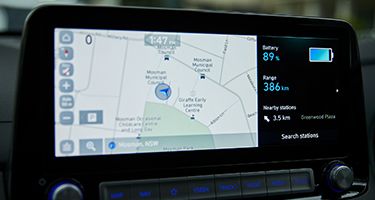Quick Stats
- Battery electric vehicles accounted for 3.1% of sales in 2022 [3]
- In 2021, electric vehicle sales tripled leading to 20,665 plug-in electric vehicles sold. [4]
- Currently, transport is Australia’s second largest source of national emissions at 19%. [9]
1.0 Electric Car Sales in Australia
| Year | Number of Electric Vehicles Sold |
| 2011 | 49 |
| 2012 | 253 |
| 2013 | 293 |
| 2014 | 1,322 |
| 2015 | 1,771 |
| 2016 | 1,369 |
| 2017 | 2,287 |
| 2018 | 2,216 |
| 2019 | 6,718 |
| 2020 | 6,900 |
| 2021 | 20,665 |
Electric car sales only started to gain traction in Australia from 2011 onwards; coinciding with electric car models increasing in availability. 6,718 fully electric (EV) and plug-in hybrid (PHEV) cars were sold in 2019, 0.6% of car sales within Australia in that year. [2]
Sales of electric vehicles tripled in 2021 with 20,665 plug-in electric vehicles sold due to increased model availability, lower prices and state and government electric vehicle incentives [3]. As of 2022, battery electric vehicles accounted for 3.1% of all motor vehicle sales. [4]
With many of these incentives introduced in the later part of 2021, the impact on total electric car sales was limited. However, in the ACT 5% of all sales were attributed to electric cars, due to the ACT’s incentive being in place for the entirety of 2021. [3]
When it comes to EV models it was Tesla’s Model 3 that accounted for nearly 60% of electric vehicle sales [3]. The second most popular model was the MG ZS EV and the third was Mitsubishi's Outlander PHEV (plug-in electric vehicle).
The increasing number of electric vehicles sold in 2022 indicates that Australians are committed to decarbonising their transport choices. And with rising sales, consumer demand will continue to increase despite the long wait times and supply constraints due to fuel efficiency standards.
2.0 Electric Vehicle Incentives in Australia
In 2022, Queensland, Victoria and Western Australia incited new Electric Vehicle Incentives.
Queensland
In Queensland, the state government announced a $55 million incentive for electric vehicle drivers.
The package offers $3,000 grants for electric vehicles under $58,000 and a further $10 million towards electric vehicle charging infrastructure and zero emission vehicles into the Queensland Government’s fleet. [5]
These incentives may provide an opportunity for more families and road users to own an electric vehicle in Queensland.
Victoria
In Victoria, the state government has put forward $7.2 million in electric vehicle subsidies; 2,600 subsidies at $3,000 per vehicle. [6]
The additional incentive supports the Victorian government’s expansion of charging infrastructure and is an extra push for motorists who were not sure whether they should move to an electric vehicle.
Western Australia
In 2022, the Western Australian government announced that $60 million of funding had been allocated to support the adoption of electric vehicles. This includes 10,000 rebates of $3,500 for Western Australians who purchase a new electric or hydrogen fuel cell vehicle. [7]
The package also includes funding for new charging infrastructure and is the next step towards electrifying Western Australia’s road network.
3.0 Electric Vehicle Infrastructure
Further investment in infrastructure for electric vehicles supports ongoing initiatives to reduce Australia’s emissions, create a cleaner vehicle fleet and ensure that the automotive industry is sustainable.
New South Wales
In 2022, New South Wales announced a further $38 million towards electric vehicle charging infrastructure. [8]
The aim is to build 500 kerbside charging points and equip 125 apartment buildings with new EV charging upgrades on top of ultra fast charging stations and charging opportunities at regional businesses and tourist locations that were previously announced.
By continuing to invest in EV infrastructure, this will enable further accessibility to electric vehicles from the wider general public and encourage further emission reduction from Australia’s automotive fleet.
4.0 National Electric Vehicle Strategy
In 2022, the Department of Climate Change, Energy, the Environment and Water published the National Electric Vehicle Strategy: consultation paper seeking views on proposed goals, objectives and actions for said strategy.
The consultation paper raises a number of key issues including, vehicle price, model, availability, battery supply, emission reduction, and further support for road users when considering the development of charging infrastructure and purchase incentives.
The department proposed these goals:
Make EVs more affordable
Expand EV uptake and choice
Reduce emissions
Save Australians money on fuel
Increase local EV manufacturing
And these objectives:
Encourage rapid increase in demand for EVs
Increase supply of affordable and accessible EVs to meet demand across all segments
Establish the systems and infrastructure to enable the rapid uptake of EVs.
And once those objectives are achieved then barriers to EV uptake will address the following:
Limited availability of affordable EV models across all vehicle types
Range anxiety due to gaps in EV charging networks and hydrogen refuelling infrastructure Information for consumers.
5.0 Electric Car Discount
On 25 November 2022, the Treasury Laws Amendment (Electric Car Discount) Bill 2022 was passed in Federal Parliament.
This bill removes import tariffs for electric vehicles beneath the Luxury Car Tax Threshold ($84,916) and aims to exempt low and zero emission cars from Fringe Benefits Tax (FBT). [9]
This law not only supports the National Electric Vehicle Strategy but also provides a financial incentive for road users looking to purchase an electric vehicle.
While there is more to do, this is a great first step towards challenging Australia’s policy settings to support Australia’s goal to decarbonise the light vehicle fleet.






